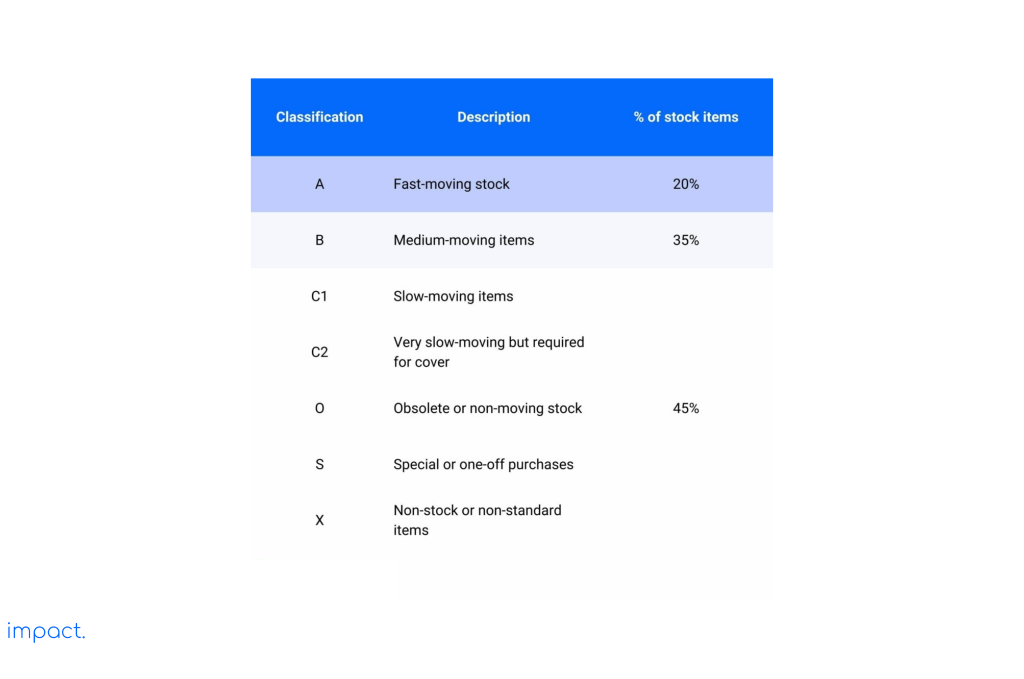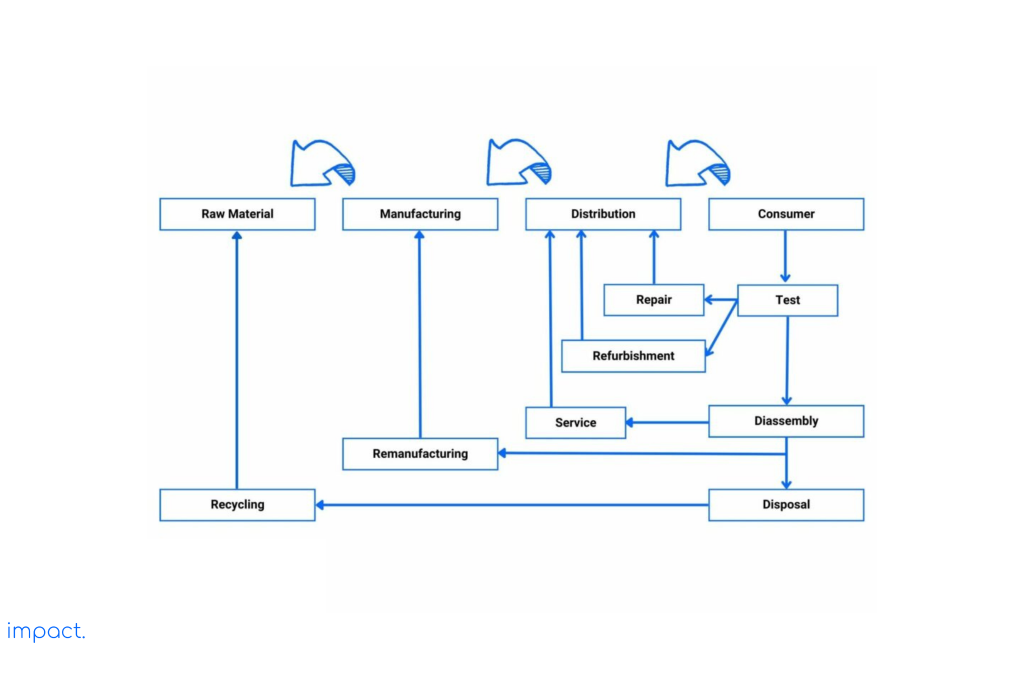Kanban: Definition, 6 Rules, and its Benefits
Kanban is a crucial part of the Just in Time (JIT) system, which we discussed…
Sean Thobias
May 17, 2025After picking, the warehouse performs other tasks. These tasks include replenishing inventory, providing value-added services, and delivering products. Additionally, this article will discuss how the stock is managed and calculated and the importance of keeping the warehouse clean and organized.
Read more: Understanding Warehouses: Definition and its Importance
To ensure a smooth and efficient picking process, it is essential to always maintain sufficient product availability at the picking locations. Replenishment is crucial in restocking those locations, benefiting the pickers by saving time and reducing costs.
Right now, a system called WMS gives real-time information about when and where replenishment is needed. It can also tell how many orders there are, so the restocking can be done before the next batch of orders arrives.
Replenishment is crucial because late replenishment can lead to space shortage and non-compliance with the “first in, first out” (FIFO) rule. Moving products directly from the picking area to the restocking area is preferable to ensure enough space, but planning is necessary.
If there’s no system like WMS, the warehouse manager needs to make sure they have planned how much of each product to have available based on how much they expect to sell and how much space they have. They must also train the staff to recognize when restocking is needed and tell their supervisors or forklift truck drivers.
There are different ways to make this process faster, like combining multiple places where the same product is picked, using unique shelves where restocking is done from other aisles, or scheduling different tasks for different times of the day. For example, they can refill in the morning and pick up in the afternoon.
Read more: 9 Vital Warehouse Processes You Need to Know
Let’s examine the crucial factors of stock replenishment. Here are five factors you must consider:
Several warehouses currently offer value-adding services in dedicated or co-owned warehouses. Third-party logistics companies provide these services to their customers. The value-adding services include:
In addition to the mentioned services, more advanced tasks involve production processes. For instance, after a customer orders, these services include adding components such as a graphics card and installing software on personal computers and laptops. Value-adding services also encompass handling returns and providing repair services.
To efficiently perform these activities, having enough space near the dispatch bay is essential to minimize unnecessary movement. The ideal location is a warehouse with a height that allows placement above the dispatch bay, typically on the mezzanine floor.
Support activities in a warehouse are essential for making processes more efficient. These activities, carried out by supervisors, specialized teams, and housekeeping teams, include:
You can group these activities into three sections:
The warehouse manager guides inventory staff in determining the appropriate safety stock level and handling procedures for goods. Managers also actively identify items that suppliers can ship directly without requiring storage. Here is the classification table:

Read more: Warehouse Manager: Roles and 10 Challenges to Overcome
To quickly and efficiently handle slow-moving excess stock in a warehouse, follow the formula below:
| Stock turn = cost of goods sold ÷ average cost of goods stored |
Or
| Stock return = Annual throughput in units ÷ average number of units held in stock |
Suppose a company sells 1,200,000 units annually and keeps an average of 100,000 units in stock. In that case, they replace its stock 12 times yearly or once a month. This calculation means the inventory stays in the warehouse for too long, and the company has set too high safety stock levels.
Here are some examples of stock turnover rates in different industries:
This example shows that higher numbers mean better company performance. The maintenance shop always keeps low stock because it needs to have some on hand if something breaks down.
Doing a complete stock count requires closing the warehouse for a certain period. During this time, the warehouse stops receiving or sending out any items. Companies perform this task annually, usually at the end of the year. However, some companies do it more frequently, either every three months or once a year, depending on the auditor’s instructions.
The auditor will agree to conduct a yearly stock count and audit based on the company’s requirements, provided that the company can prove the reliability of its ongoing calculations. When the estimates are accurate, the Warehouse Management System (WMS) will give the final stock numbers for the year.
When performing cycle calculations, it’s better to use ABC analysis to ensure you count fast-moving, high-value items more often than slow-moving, low-cost items. Here’s a recommendation: measure fast-moving, high-value items every month and slow-moving goods once or twice a year.
To ensure comprehensive calculations, you can use the following percentages as examples:
Increasing the frequency of daily counting will give you more accurate calculations. However, it depends on the available resources and their costs. You need to consider the trade-off between the cost of potential errors and the cost of identifying those errors in the first place.
Warehouse managers have a crucial responsibility to ensure the safety and security of products, regardless of ownership. They accomplish this by taking good care of the products, implementing security measures, and promoting a vigilant staff. Effective security management prevents inventory loss, reduces insurance costs, and minimizes personnel turnover.
Securing the loading dock and platform areas is paramount as they are vulnerable spots for outsiders to steal items. While traditional security systems focus on external threats, it is now essential to address internal theft within the organization.
Installing closed-circuit television (CCTV) at strategic locations in the warehouse is highly beneficial to maintain security. Conducting routine inspections and patrols proves cost-effective and practical. Boosting protection in loading bays can be achieved by separating them from employee parking areas, making it harder to remove goods. Implementing thorough checks of incoming and outgoing goods through staff or a system effectively prevents losses.
Protecting crucial warehouse management system (WMS) data requires specific measures. Using strong passwords and external firewalls to control access and enhance security is vital. Regularly backing up the data and storing backup files in a separate location is critical.
Secure equipment like servers, computers, and laptops for theft prevention and data security. Lock these devices with keys or access codes and regularly update passwords on personal computers. Here are essential security measures for warehouses:
The return or reverse logistics process includes different steps, such as managing product returns, handling transit packaging, and dealing with excess goods. Take a look at the image below to see the other steps involved:

Companies must prioritize handling returned goods to avoid unnecessary costs. Leaving these items in the warehouse leads to problems: they take up space, complicate stocktaking, and make valuation difficult. Companies can resell the products and restock them at a cost to deal with this.
The increase in e-retail has also led to more returns. The most commonly returned items are textiles and clothing. Customers with a 14-day return option frequently return high-quality items that we can quickly put back into stock.
Companies should handle product recalls with care. They must quarantine the products to ensure public safety, avoid mixing them with good products, and mistakenly send them out. The latest laws impose expensive landfill fees, prompting many warehouses to implement reverse logistics programs and establish special warehouses to manage returns.
Companies establish special warehouses dedicated to sorting, inspecting, repairing, and disposing of returned goods. The objective is to swiftly reintegrate stock into the supply chain, whether as finished goods or spare parts or dispose of them effectively. When conducting the return process in an existing warehouse, it is crucial to handle it with caution to prevent any mixing with other goods.
Before deciding on a reverse logistics operation, you need to calculate several things, such as:
Once you have these calculations, you can choose between handling the reverse logistics internally or subcontracting to a third party. The decision depends on the following factors:
Regarding disposal, companies must obtain certification to prove proper disposal of non-recyclable products and packaging.
Read more: 7 Warehouse Picking Methods: How to Choose the Right One
Effectively managing and coordinating the shipping process with other warehouse activities is essential. When the receiving and shipping operations utilize the same door, it is crucial to establish a daily schedule that optimizes labor and equipment utilization. It is necessary to adjust the workload according to the number of available doors To avoid congestion.
Loading bays in warehouses need enough space for cargo and various inspections. Coordinating well ensures that there is a correct delivery sequence for orders. As a result, the final delivery loaded onto the vehicle is given priority during the unloading process.
Many companies use a marked grid on the warehouse floor in the shipping area to determine the maximum vehicle area that can fit. For example, a warehouse that handles industrial pallets may have a grid equivalent to 26 pallets. A warehouse with euro pallets may extend it to 36 pallets. This process helps separate and quickly identify orders when a vehicle carries multiple shipments.
Ready-to-ship full pallets are picked up from the rack area and loaded onto vehicles. Just like during the receiving process, checking the driver’s documents to ensure they are transporting the correct cargo is essential. Additionally, trailers undergo inspections to ensure they are clean, watertight, and free from odors that could contaminate the product, have the right temperature, and their floors are undamaged.
Some companies want drivers to help load and check the cargo. In contrast, others worry about safety when having external workers in the loading area. If it’s the latter case, the driver should go somewhere else.
Furthermore, let’s address what the driver should do after loading the cargo. If the driver personally witnesses the loading process and the vehicle is sealed before leaving the loading area, they can sign the document. If the truck is sealed, write down the seal number on the shipping document and provide the driver with additional paperwork, such as a hazard datasheet.
Receiving and picking are important tasks in a warehouse, but replenishment and dispatch are equally essential. Timely replenishment ensures efficient picking, while accurate, timely delivery satisfies customer expectations.
The warehouse’s ability to provide added-value services allows manufacturers to postpone certain activities until orders arrive. This postponement reduces the number of stock codes. It enables retailers to return actions to the warehouse, saving travel time. Maintaining accurate stock count, ensuring security is crucial for product integrity, and maintaining trust in internal and outsourced warehouse operations.
Richard G. 2011. Warehouse Management. Great Britain: Kogan Page Limited.
Impact Insight Team
Impact Insights Team is a group of professionals comprising individuals with expertise and experience in various aspects of business. Together, we are committed to providing in-depth insights and valuable understanding on a variety of business-related topics & industry trends to help companies achieve their goals.
See how our ERP provides better value.
Speak with our consultant to explore how we can improve your accounting, processes, and people.
